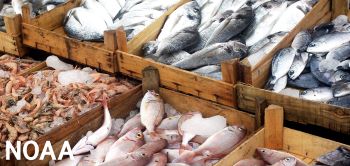14 - waste to wealth_edit.jpg

Leftovers from fish processing—tails, fins, guts—in the fish markets of India are being turned into fertilizer for crops, creating jobs and cleaning up waterfronts. Credit: Shutterstock, NOAA.
When the fish markets of Chennai, India, process the daily catch, there are lots of leftovers: tails, fins, guts, and other parts—as much as a quarter to half of the entire catch. Those parts typically are dumped at the shoreline for the tide to sweep away. But the tide returns a lot of the debris to shore, where it attracts insects, dogs, and other scavengers. And it makes the shore smelly and unsanitary.
But a program known as “waste to wealth,” launched a few years ago by the Indian government, is helping clean up the mess. It converts some of the nasty leftovers to fertilizer for crops and food for tiny marine organisms. And it provides jobs and extra income for the locals.
They grind up the fish parts, then “stew” them using an enzyme provided by the government. After three days, they remove the pungent brew and separate it into liquids and solids.
The liquids are sold to aquaculture operations that raise fish, shrimp, and other seafood. The material provides nutrients for the tiny organisms that are fed to the larger ones. The solids are dried in the sun for a few days, then sold to farmers as fertilizer. The government says that about 80 percent of the original material is converted to these products.
The process has been tried successfully with a number of small-scale operations, which can process up to a ton or so per day. A larger processing plant came online in late 2021—boosting local economies while cleaning up a smelly problem.

